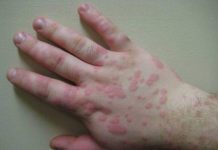There are some diseases that create fear in the heart. In that, leprosy is one disease.
Although this is in the way of withdrawing stage, the stigma, fear, and the isolation associated with this condition is proven to be more damaging than the disease itself.
Even individuals who are cured with leprosy fear to speak about it because they are scared of the discrimination. Even though many are being cured, many people are still isolated.
Leprosy is caused by a slow-growing bacterium called Mycobacterium leprae and it is not extremely contagious. The mechanism of transmission of this disease is not known.
According to the reports from 109 countries, during the past five years, the number of new detected cases of leprosy has continued to decrease dramatically at an average rate of 20% per year.
Know different types of leprosy!
The leprosy is classified as paucibacillary (tuberculoid leprosy) and multibacillary Hansen’s disease (lepromatous leprosy) or borderline leprosy.
Borderline leprosy (multibacillary leprosy) of intermediate severity is the most common form of this disease.
In this type, skin lesions look like tuberculoid leprosy, but these lesions are numerous and irregular with large patches, which affects the whole limb. It also involves the peripheral nerves causing severe weakness and loss of sensation.
Paucibacillary Hansen’s leprosy is associated with many hypopigmented skin macules with patches that have no sensation and damaged peripheral nerves, which are attacked by the human host’s immune cells.
Multibacillary Hansen’s leprosy has characteristic features of symmetric skin lesions, plaques, nodules, thickened dermis, nasal congestion, and epistaxis.
People who are living in epidemic areas with poor conditions like contaminated water, insufficient diet, and inadequate bed, and people with other diseases such as HIV, which suppresses the immune function are at high risk of having this infection.
Treatment Principles Of Leprosy Control Program!
The goal of leprosy control program is early detection of patients with this infection, giving them appropriate treatment, and adequate care to prevent disabilities and rehabilitations.
Since leprosy is an infectious disease, antibiotic therapy plays a vital role in treatment. There are many effective chemotherapy agents that act against Mycobacterium leprae.
As per WHO recommendations, dapsone, rifampin, clofazimine, ofloxacin, and minocycline are considered to be the backbone of the multidrug therapy. Other chemotherapeutic drugs include Levofloxacin, sparfloxacin, and clarithromycin. These are also proved to be effective against Mycobacterium leprae.
Diagnosis with multidrug therapy has a key role in the treatment and strategy to eliminate the disease as a public health problem. WHO made this multidrug therapy treatment available free of charge to all patients throughout the world since 1995.
For both Paucibacillary and multibacillary leprosy, rifampin is central for treatment. In the treatment of this infection with rifampin, this drug will be administered in a single monthly dose. In this protocol, no significant toxic effects have been reported.
Other drugs also have bactericidal activity against M. leprae. Researches state that they can cure the leprosy, but they cannot restore their extremities.
Even though there is a great decline in the cases of leprosy, many people are discriminating the cured people. Everyone should need to be educated about the fact that this is a curable disease.












